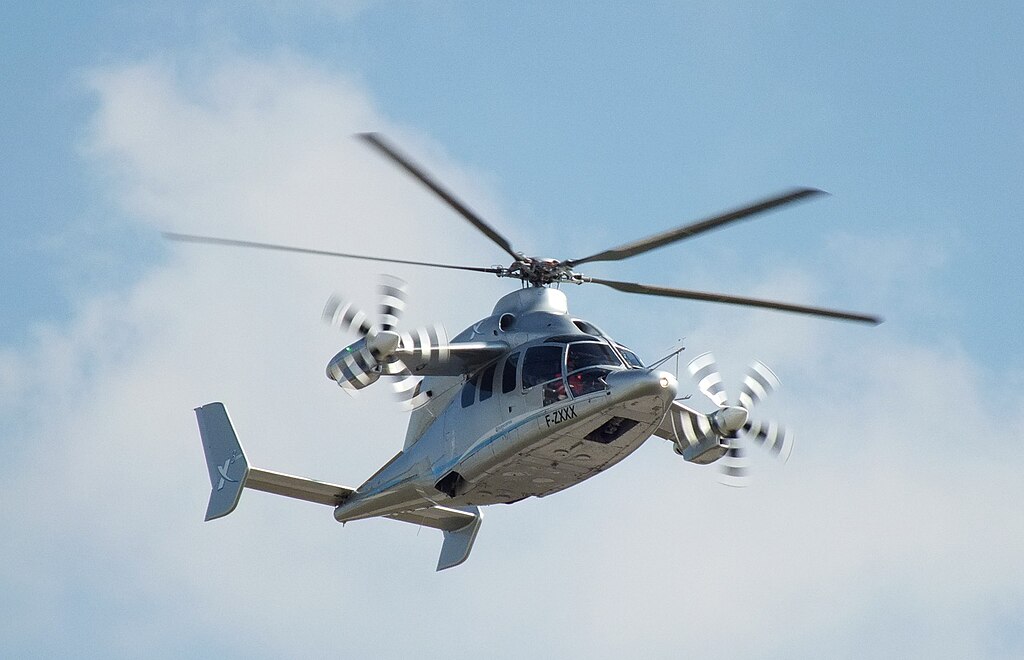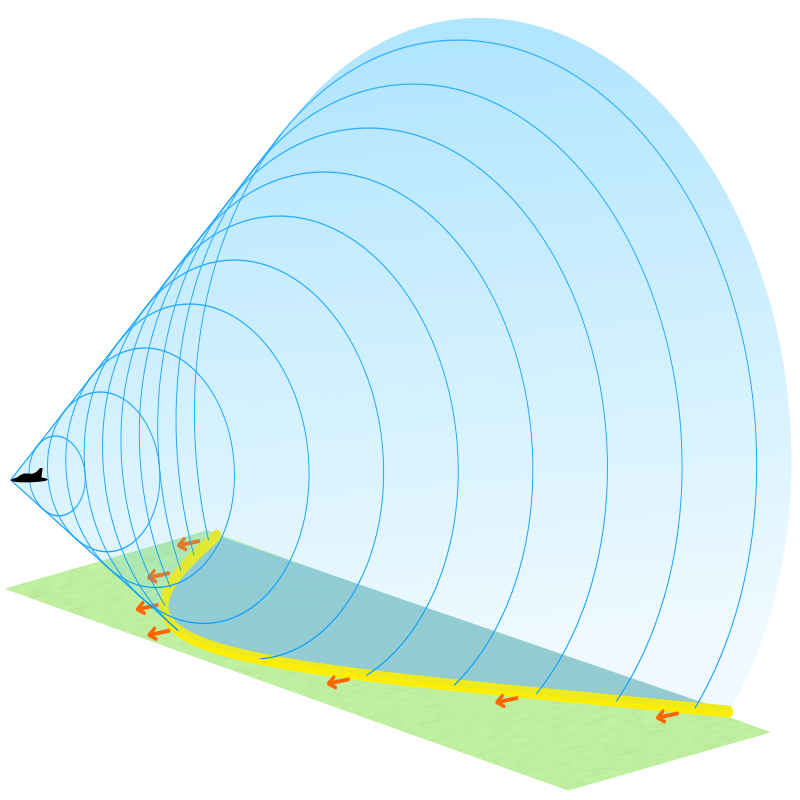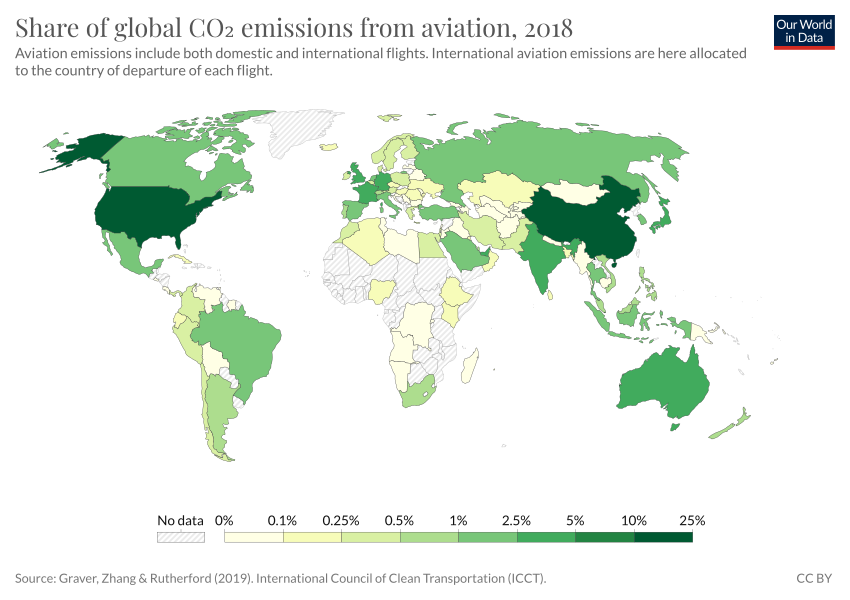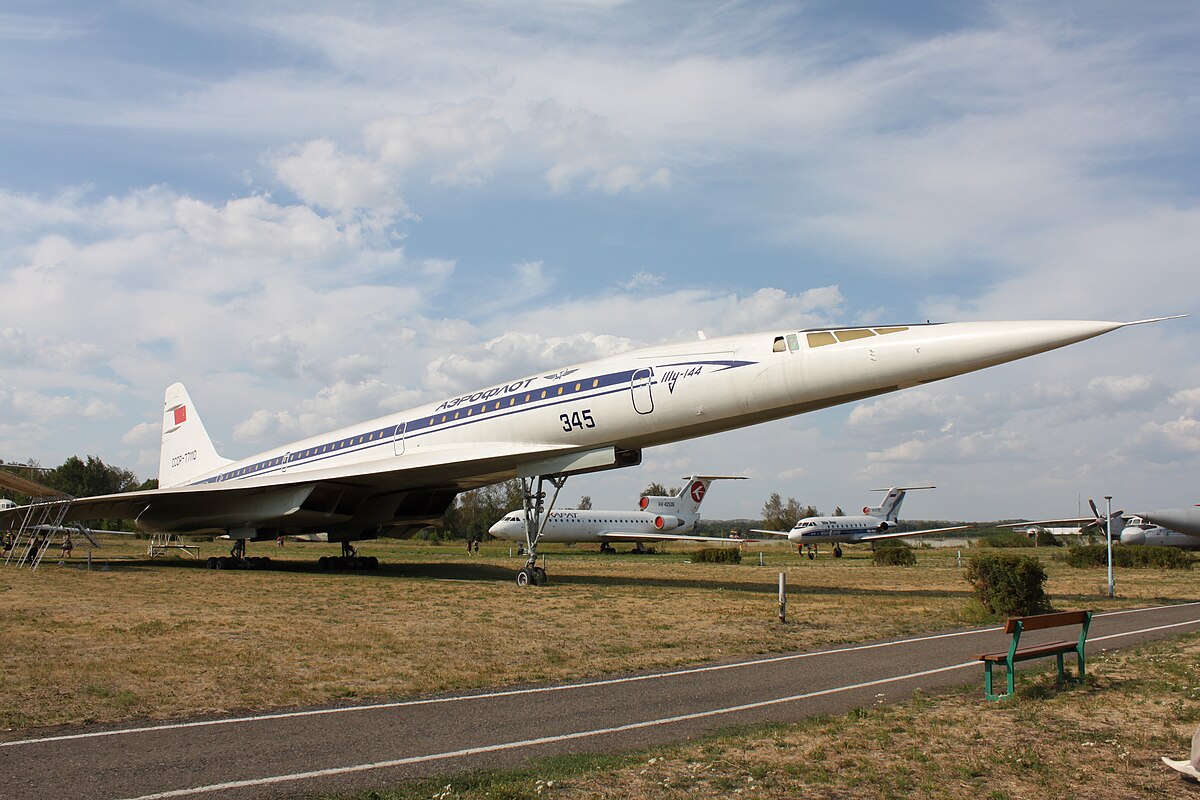
Picture: Yosi Aloni | Wikimedia Commons
It has been just over a century since passengers have been able to fly commercially. During this time, we have seen giants such as the Airbus A380, which has the capacity to transport more than 850 passengers and set a record for being the biggest commercial aircraft ever. Aircraft like the A380 necessitate a different category of airport and have also changed the landscape of airports. We also have seen aircraft like the Stratolauch, where we see the fuselage of two aircraft tethered into one, leading to aircraft larger than football fields. Such giants, though, don’t have the claim of being the fastest commercial aircraft though.
The fastest commercial aircraft have flown at speeds greater than the speed of sound. Topping speeds greater than Mach1, these aircraft have even completed transcontinental flights. However, they have had their own ecological footprint, as their operations have been shown to increase the incidence of skin cancer by as much as 4%. On the positive side, they’ve led to the construction of technologies such as the construction of acoustic fences.

The North American X-15 is equipped with rocket ignition engines.
Learning about them, therefore, is paramount to better understanding the aviation fraternity as a whole. In this article, we’ll discuss the fastest aircraft ever flown and how the speed-record setters have evolved over time.
A Few Interesting Numbers Related to the Fastest Commercial/ Non-Commercial Aircraft:
- A speed record of Mach 6.7 (7,274 km/h or 4,520 mph) makes the North American X-15 the fastest manned aircraft ever flown. It set
- The Tupolev Tu-144, designed and (im)perfected in the USSR, could fly at speeds of Mach 2.35 (1,550 mph or 2,500 km/h), making it the fastest commercial aircraft to take to the skies.
- Lockheed SR-71 Blackbird, having a maximum speed of Mach 3.3 (2,193 mph or 3,529 km/h), is the fastest military aircraft in service.
- Eurocopter X 3 has achieved a top speed of 293 knots (337 mph or 543 km/h), making it the fastest helicopter ever built.
- Commercial airliners’ average cruise speed is 550-600 mph (885-965 km/h).
- NASA X-43A, which reached a top speed of Mach 9.6 (7,310 mph or 11,744 km/h), is the fastest non-rocket-powered aircraft.

The fastest helicopter, the Eurocopter X3
History of Commercial Aircraft Speed
The very first aircraft
The first ever aircraft, Wright Flyer I, flew at a speed of 10 ft/second. This aircraft was designed by the Wright Brothers and first took to the skies on 17th December 1903. This achievement by the Wright Brothers is a folklore in aviation literature around the world.
It is difficult to say whether we could say the Wright Flyer I was the fastest aircraft of its time as it was the first ever made. The speed it achieved of approximately 10 kilometers per hour can be challenged by modern day runners and could be thought of as sluggish, but its impact was documented well by a biographer of the Wright Brothers:
“What had transpired that day in 1903, in the stiff winds and cold of the Outer Banks in less than two hours time, was one of the turning points in history, the beginning of change for the world far greater than any of those present could possibly have imagined. With their homemade machine, Wilbur and Orville Wright had shown without a doubt that man could fly and if the world did not yet know it, they did. Their flights that morning were the first ever in which a piloted machine took off under its own power into the air in full flight, sailed forward with no loss of speed, and landed at a point as high as that from which it started.”
Without the most famous brothers in the field of aviation, future aviators such as Charles Lindburg and Raymonde de Laroche, who would change the landscape of aviation wouldn’t have germinated at all.
The World War
Military aviation, for all its environmental and civilian damage, deserves a lot of credit for bettering the speed of aircraft over time. The World War saw some stiff competition among nations to outdo others in aviation prowess, has had a lasting impact. Schneider’s Trophy, a competition named after the aviator who once held a record for the highest altitude in a balloon- Jacques Schneider- was a pivotal contest that bettered aircraft speed by eight times.

The man who started Schneider’s trophy
In order to support aviation, he set forth a trophy worth around 2 million dollars of valuation before and after the First World War. When the 2 million dollar competition that was the Schneider’s Trophy started in 1913, the fastest aircraft in the competition had a speed of around 73 kilometers per hour. When the last Schneider’s Trophy was held in 1931, the winner touched a speed of 547 kilometers per hour.
Post-World War Aircraft Speeds
After the end of the World Wars, the “Democratic” faction and the “Communist” faction polarized the world as the United States and the USSR tried to better each other’s aviation efforts. The Soviet Union – the poster figure for communism designed colossi such as the Caspian Sea Monster– a bridge between an aircraft and a water-craft, and the metal monsters such as the Kalinin K-9, which many dubbed was an aircraft that was so ahead of its time that the technology back then struggled to catch up with its innovation.
USSR also designed aircraft such as the Antonov An-225 Mriya a dream/nightmare-ish aircraft that was able to carry a space shuttle into space. It was an aircraft that cruised at 800 km/hr despite having one of the biggest wingspans in the world– 88.3 meters. Though the Mriya was destroyed in the Russia-Ukraine war of 2022, it did show how even large aircraft could be one of the fastest to operate.

An-225 carrying Buran in 1964
The USSR also designed the Tupolev Tu-144, the supersonic betterment of one of the first commercial jetliners in the world- the Tu-104. As the USSR designed the first supersonic aircraft, the the democratic nations, on the other hand, had a marvel of their own—the Concorde.
| Aircraft | Tu-144 | Concorde |
| Crew | 3 (1 Commander and 2 Engineers) | 3 (2 Pilots and 1 Engineer) |
| Manufacturer | Tupolev | British Aircraft Corporation and Sud Aviation |
| Nation | USSR | Britain and France |
| Passengers | 140 passengers (11 first class & 129 tourist class) | 92–120 passengers (All business) |
| First test Flight | 31 December 1968 | 2nd March 1969 |
| Speed | 2,631 km/h: 2.15 times the speed of sound or M2.15 | 2,496 km/h; 2.04 times the speed of sound or M2.04 |
| Range | 6,500 km (4,000 mi) | 7,222.8 km (4,488.04 mi, 3,900 nmi) |
| Date of retire | 1999 | 2003 |
How Concorde and Tupolev broke the sound barrier
The wing geometry of supersonic aircraft needs to be equipped with Delta-shaped wings—optimization features that help the aircraft sustain speeds greater than Mach 1. Delta-shaped wings, unlike normal wings, don’t have a straight sideways orientation. Instead, they are bent slightly forward or backward. This acclivity comes in handy while dealing with shock waves generated during transonic/ supersonic travel.
The (double) delta wings are triangular in outlook, and a bird’ s-eye view of the aircraft reveals the vertex of the triangular wing attached to the frontal section. Such a wing design, whose front is highly swept, helps cut across drag at transonic and supersonic speeds, thereby improving lift. Many military aircraft, such as the ones discussed in the “interesting numbers” section of this article, possess the delta-wing design.

Picture: Eduard Marmet | Wikimedia Commons
Fastest Commercial Aircraft in operation
The Boeing 747-8i, also known as the 747-8 Intercontinental, has a Mach Speed of M0.86 and is the fastest commercial aircraft currently in operation. Only Lufthansa, Air China, and Korean Air offer passenger services on this aircraft, which is dubbed the “King of the Skies.”
Why did supersonic commercial aircraft take a turn for the worse?
Look at the numbers: Boeing 747-8i the fastest commercial aircraft today operates at M0.86, the Tupolev Tu-144 has a top speed of M2.15. If there were aircraft that could fly three times the speed of the fastest commercial aircraft in operation today, one quite naturally asks the question, “Why did the fastest commercial aircraft in the world disappear from the skies?” Let’s take some of the reasons behind this supposed downgrade in speed.
Environmental Impact
The greater an aircraft’s speed, the greater its debilitating impact on the environment. Aircraft like the Concorde and Tu-144 were notorious guzzlers of jet fuel, releasing greenhouse gases such as carbon dioxide and nitrogen oxides in orders greater than ordinary passenger aircraft operating today. These aircraft were also giant emitters of particulate matter, affecting weather patterns and temperatures. Claims that 500 Concordes would increase skin cancer by as much as 4% didn’t help the transition of the aircraft into being accessible to all.

Conical shockwave with its hyperbola-shaped ground contact zone in yellow
Running engines of supersonic aircraft of the past also impacted residents on the ground by the generation of sonic booms- the formation of shock waves as the aircraft reached a speed of sound. A bang followed thee boom, rendering the lives of people in skyscrapers and other structures below the supersonic aircraft in flight extremely difficult. This was one of the reasons why the Concorde was to fly exclusively over the oceans. Even then, its effect on woodland and aquatic creatures was great.
High Fuel Consumption
One of the biggest drawbacks of supersonic aircraft like the Concorde and Tupolev Tu-144 was their exorbitant consumption. Speeds of almost M2.0 require higher thrust, which necessitates a higher fuel flow rate for combustion.
Concorde, powered by four Rolls-Royce/SNECMA Olympus 593 engines, necessitated a higher fuel required to generate thrust for supersonic speed. Concorde’s consumption of 25629 liters per hour of fuel in the air roughly corresponded to 15 passenger miles per gallon. This was two or three times less fuel-efficient than aircraft such as Boeing 707 and 747, respectively.

Photo: Our World in Data | Wikimedia Commons
Were Supersonic Aircraft Elitist?
Concorde was known as a Royalty aircraft- an aircraft that had a really high passenger cost, making it accessible only to wealthy people. Special flights in this sleek aircraft for members of the Royal family led to some people accusing the aircraft as a piece of showbiz for people up the higher ends of the social echelons.
Commercially, Supersonic jets are the future
Computer technology has been a revolution of sorts- a blockchain revolution has promises in the field of aviation as well. However, the overarching structures of aircraft haven’t changed as much as computer technology has. This supposed non-change has parallels with the structures and workings of cars which hasn’t had as big a transformation as the hardware/software. This was encapsulated as:
“Today’s car differs from those of the immediate post-war years on a number of counts. It is cheaper, allowing for the ravages of inflation, and it is more economical and efficient. .. But suppose for a moment that the automobile industry had developed at the same rate as computers and over the same period: how much cheaper and more efficient would the current models be? If you have not already heard the analogy the answer is shattering. Today you would be able to buy a Rolls-Royce for £1.35, it would do three million miles to the gallon, and it would deliver enough power to drive the Queen Elizabeth II. And if you were interested in miniaturization, you could place half a dozen of them on a pinhead.”
In recent times, we have seen a private Japanese enterprise attempt to land on the moon. Space X’s ambitious targets, along with NASA’s targeted mission to the moon, show the zeitgeist of space travel. Such attempts will bring forth high-speed travel such as the supersonic and hypersonic ones. These technologies will trickle down to the aviation industry as well.
Some Proposed plans for making Commercial Flights Supersonic
Aviation enterprises such as Spike Aerospace and Boom Technology are incessantly working to make supersonic flight possible. American Airlines, which has planned to buy 20 Boom Overture aircraft, gives some hope that supersonic flights will be possible this decade.

Photo: Vlad Volkov | Wikimedia Commons
Short highlight of Aircraft Models projected for Supersonic flights
Boom Overture
| Specimen | Values |
| Passenger Capacity | 65 – 80 |
| Speed | 2099 km/hr |
| Range | 7867 km |
Spike s 512
| Specimen | Values |
| Passenger Capacity | 12 – 18 |
| Speed | 1975 km/hr |
| Range | 7408 km |
Technologies to mitigate the disasters associated with Supersonic Flight
The onus is for the aviation community to mitigate environmental footprints like that of Concorde again. And so is the suppression of the noise from supersonic aircraft. Using acoustic lines and chevrons on engines are some of the possible measures to curb the effects of supersonic flight.
Sustainable Aviation Fuel, Hydrogen, and biofuels – which make up the proposed-to-be 800 million dollar market of Sustainable Air Fuel- might be able to cut down on the unconscionable emissions from conventional supersonic travel. In a similar way, we need to get rid of the effects of fuel-tankering to curb emissions.
Regulatory agencies such as the Federal Aviation Administration and European Union Aviation Safety Agency have also prioritized the use of sustainable air fuel. Even Boom Overture has announced using SAF 100% as an energy source for the engine.
Conclusion
In conclusion, supersonic flights have, and will make transcontinental travel possible in a matter of hours. If the aviation community can find ways to reduce its ecological footprint, supersonic air travel will be the norm. But advancements in space flight and fuel optimization techniques will be important for the resurgence of the operations of the fastest commercial aircraft traveling at speeds greater than that of sound.
